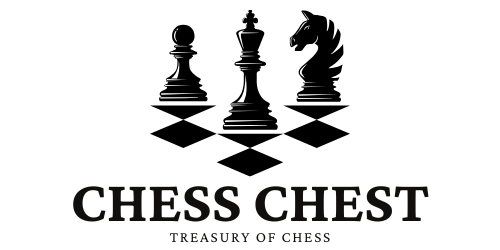In the age of digital learning, interactive chess lessons have become a powerful tool for self-guided improvement. Unlike traditional instruction, these lessons engage players with interactive challenges, quizzes, and instant feedback, allowing them to learn at their own pace. This approach is ideal for players who want to improve independently, whether they’re just beginning or aiming to take their skills to the next level. In this article, we’ll look at how interactive chess lessons work, the benefits of self-learning, and some of the best platforms for effective, independent training.
1. How Interactive Chess Lessons Work
Interactive chess lessons combine instructional material with practical exercises, requiring players to actively participate in their learning. Lessons often start with an explanation of a concept, followed by related challenges or quizzes that encourage learners to apply what they’ve just learned.
- Learning in Steps: Most lessons are broken down into small, manageable sections. Players are introduced to a topic—like a tactical motif or opening move—then complete exercises based on that concept.
- Feedback and Hints: As players work through challenges, they receive immediate feedback on their moves. Many platforms also provide hints or explanations for each move, helping learners understand their mistakes.
- Gradual Progression: Lessons are usually organized by difficulty, allowing players to start with basics and progress to more advanced concepts as they gain confidence.
2. Benefits of Self-Learning with Interactive Lessons
Interactive chess lessons offer several advantages for self-learners, making it easier to develop skills at one’s own pace and tailor learning to specific needs.
- Flexible and Convenient: Players can complete lessons at any time, making it easy to fit training into a busy schedule. Self-paced learning allows players to take their time on challenging topics or move quickly through familiar material.
- Engaging and Active Learning: Unlike passive video or text tutorials, interactive lessons require active engagement, which enhances retention and makes learning more enjoyable.
- Targeted Improvement: Interactive lessons often include a variety of themes, from tactics and endgames to openings and strategies, allowing players to focus on their areas of weakness or interest.
3. Best Platforms for Interactive Chess Lessons
Several online platforms offer interactive chess lessons designed for effective self-learning. Each platform provides unique features that cater to different learning styles and preferences.
- Chess.com Lessons: Chess.com’s lesson library offers a range of topics for all skill levels, from beginner tactics to advanced strategies. Each lesson includes detailed explanations, practice exercises, and immediate feedback.
- Why It’s Great: With a vast selection of lessons and quizzes, Chess.com allows players to explore any aspect of the game in depth. The platform’s progression-based system makes it easy to track improvement over time.
- Chessable: Chessable uses spaced repetition to reinforce learning, making it an ideal platform for retaining key concepts and move sequences. Lessons include tactics, openings, endgames, and more, with interactive quizzes to test understanding.
- Why It’s Great: Chessable’s science-backed repetition technique ensures that players retain what they learn, making it especially effective for memorizing openings and recognizing tactical patterns.
- Lichess Study: Lichess’s interactive study feature allows players to create and explore lessons on openings, tactics, and endgames. Players can work through exercises at their own pace and even create custom lessons to focus on specific skills.
- Why It’s Great: Lichess’s free and flexible study tools are perfect for players who want a highly customizable learning experience. With its user-driven approach, players can explore community-created lessons or design their own training modules.
- CT-ART 4.0: CT-ART 4.0 is a dedicated tactics trainer that includes interactive lessons focused on tactical motifs, pattern recognition, and practical exercises. It’s a well-regarded tool for building tactical skills in a structured way.
- Why It’s Great: CT-ART 4.0 provides deep, motif-based training for players who want to focus intensively on tactics. It’s designed to reinforce tactical understanding, which is essential for strong gameplay.
4. Tips for Effective Self-Learning with Interactive Lessons
To maximize the benefits of interactive chess lessons, it’s essential to take an intentional approach to self-learning.
- Set Clear Goals: Define specific skills you want to improve, such as mastering a particular opening or strengthening endgame tactics. Clear goals keep learning focused and ensure progress over time.
- Practice Regularly: Consistency is key to improvement. Schedule regular training sessions, even if they’re short, to maintain momentum and reinforce learning.
- Review and Reflect: After completing lessons, review any mistakes and reflect on areas where you struggled. Revisiting challenging lessons or topics will deepen understanding and help you avoid repeating mistakes in games.
Summary
Self-learning with interactive chess lessons offers an engaging, flexible way to improve chess skills. Platforms like Chess.com, Chessable, Lichess, and CT-ART 4.0 make it easy to practice at your own pace, targeting specific areas for growth. By setting clear goals, practicing regularly, and reflecting on progress, players can maximize the benefits of interactive learning and develop a well-rounded understanding of the game. Whether you’re a beginner or an advanced player, self-guided training through interactive lessons can be a rewarding and effective path to improvement.




